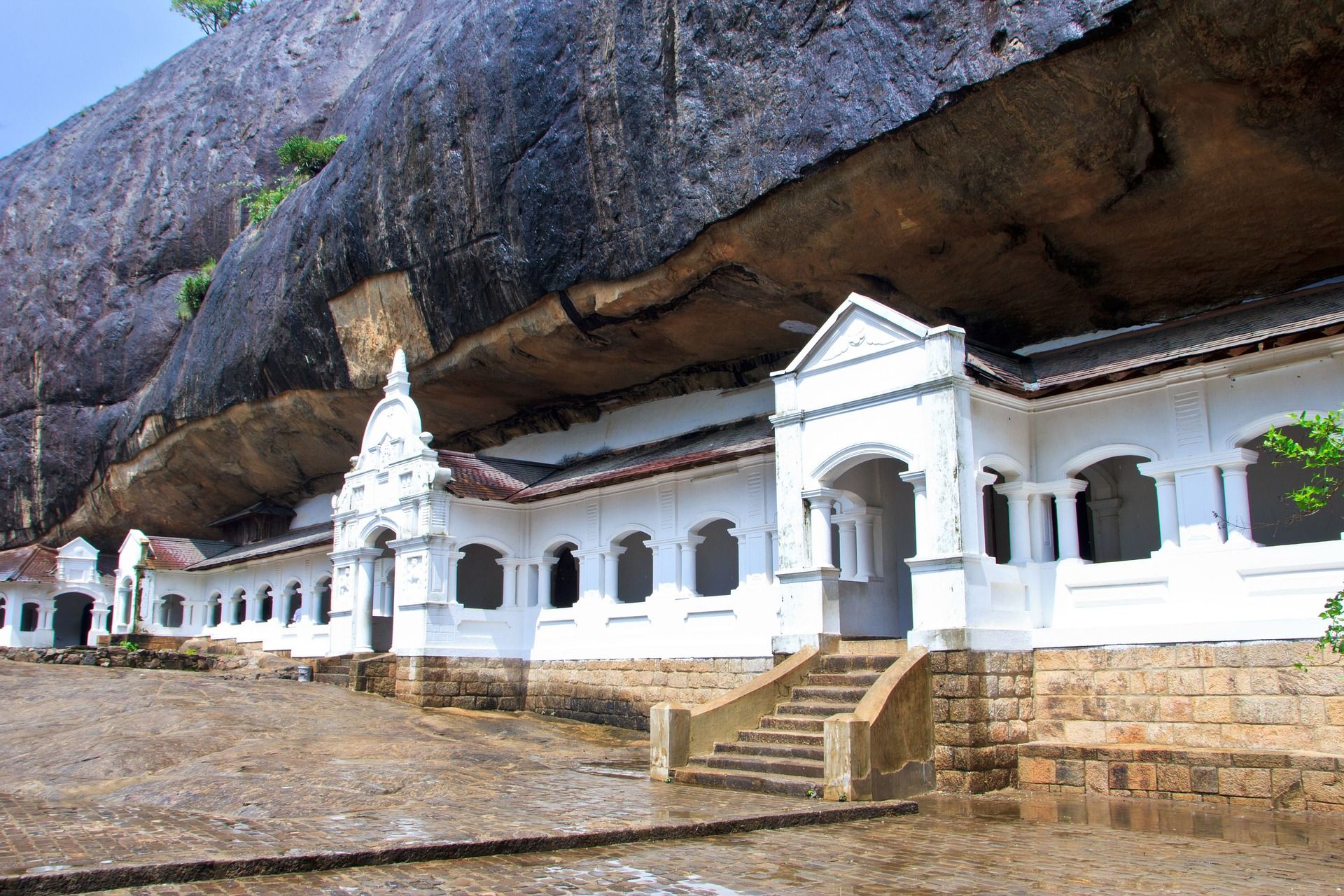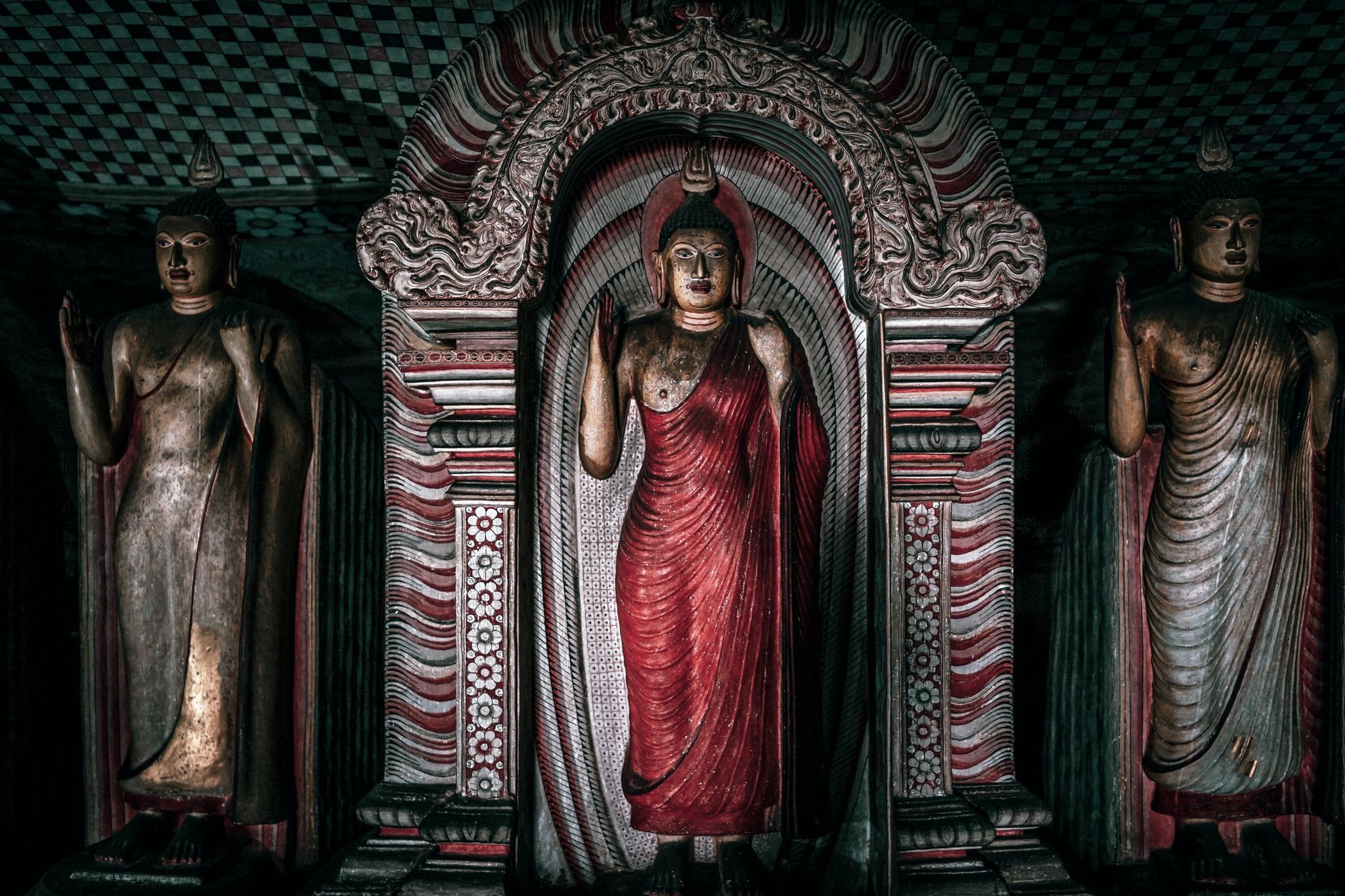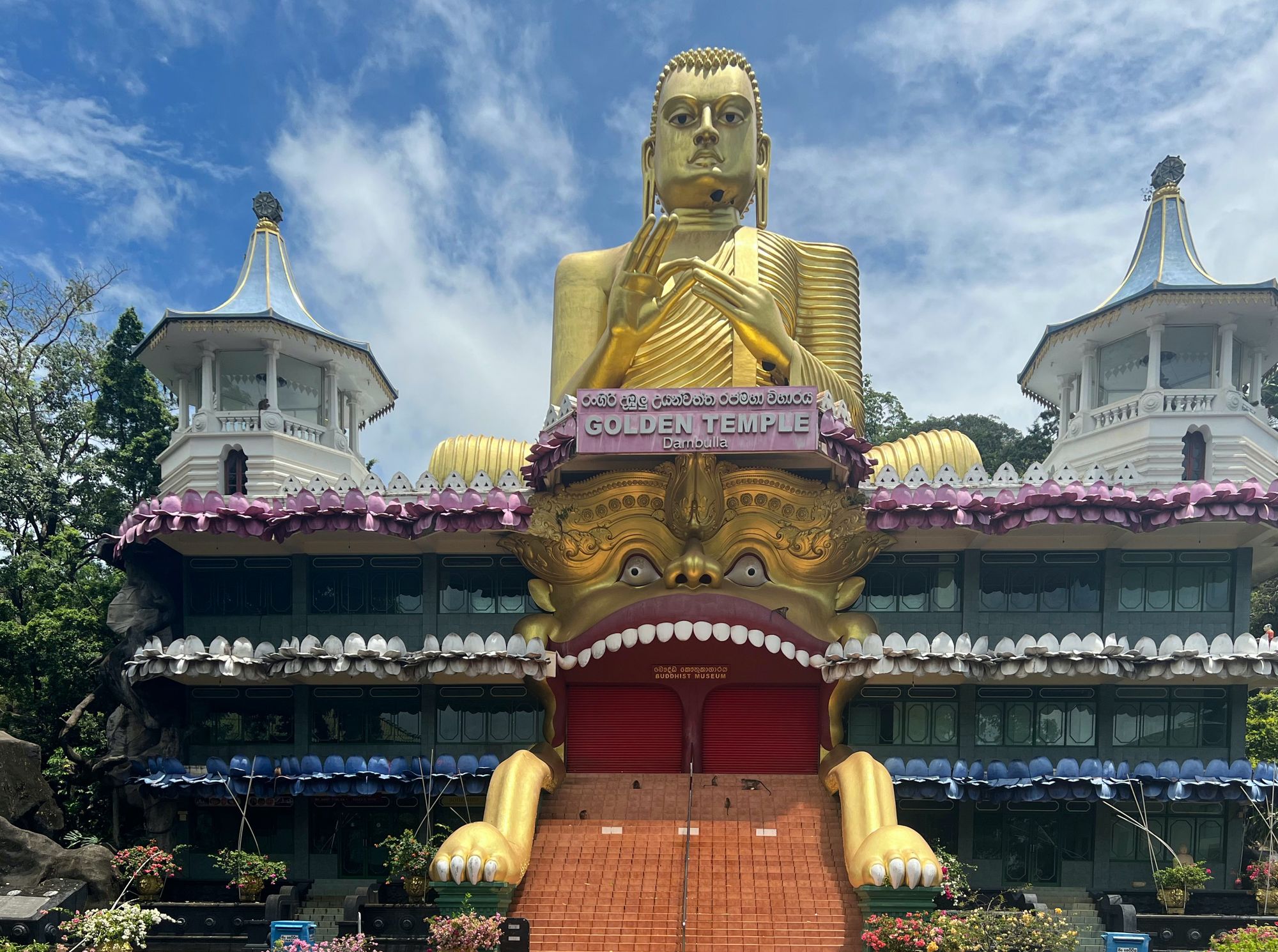
Dambulla Cave Temple
Dambulla Cave Temple is a UNESCO World Heritage Site located in the central province of Sri Lanka. Also sometimes referred to as the Golden Temple of Dambulla, this ancient temple complex is considered one of the most spectacular Buddhist sites in Sri Lanka.
The History of Dambulla Cave Temple
Dambulla Cave Temple has a rich history dating back to the 1st century BCE. The temple was built by King Valagamba (also known as Vattagamani Abhaya), who sought refuge in these caves during a period of exile. He later converted the caves into a temple and adorned the walls with Buddhist frescoes and statues. Over the centuries, the temple has been renovated several times, with the most significant being carried out by King Nissanka Malla in the 12th century. Today, the temple complex comprises five cave temples, each adorned with intricate frescoes and statues depicting the life of the Buddha and other important figures in Buddhism.

The Caves of Dambulla Cave Temple
The five caves of Dambulla Cave Temple are each unique in their own way, offering visitors a glimpse into the rich cultural and religious heritage of Sri Lanka. Not only does the Dambulla Cave Temple house an impressive collection of religious art, but it also represents the changing artistic styles and techniques across centuries.
Cave of the Divine King
The first cave, known as the Cave of the Divine King, is the largest and most impressive of the five caves. It houses a large reclining Buddha statue at the moment of his death and several other smaller statues. The walls of this cave are adorned with frescoes depicting the life of the Buddha and other important figures in Buddhism.
Cave of the Great Kings
The second cave, known as the Cave of the Great King, is the largest. It is also known for its statues and frescoes of Lord Buddha and other important figures in Buddhism. This cave also houses a statue of the Buddha in a seated posture, surrounded by statues of gods and goddesses.
Great new Monastery
The third cave, known as the Great New Monastery, has ceiling and wall paintings in the Kandyan style. The 50 Buddha statues housed in this cave also showcase various mudras or hand gestures, each symbolizing a different aspect of the Buddha's teachings. The Great New Monastery serves as a living gallery of Sri Lanka's artistic and religious heritage.
The Golden Buddha statue
The Golden Buddha statue is located outside the cave temples and is considered one of the most significant features of the Dambulla Cave Temple. The statue is plated in gold, making it a truly stunning sight.

How to get there
The temple complex is located approximately 160 km from Colombo and is easily accessible by car or public transport. It is a short 5-minute ride from Dambulla city.
Best times to visit
The caves are open from 7am to 7pm, but the ticket counters close at 5pm. It's best to visit during the early morning and afternoons.
Tips and Advice
- Make sure to take plenty of water with you as you may get somewhat tired during the climb.
- Beware of monkeys within the temple grounds.
- Note that visitors must dress modestly and remove their hats and shoes before entering the temple complex.
- Inside the temple complex, you can only take photographs without any people.
- The journey takes around 1-2 hours, so you have plenty of time to visit other destinations.
Surrounding Attractions
While visiting Dambulla Cave Temple, travelers can also explore other nearby attractions that showcase Sri Lanka's diverse natural and cultural heritage.
- Sigiriya Rock: Located just 24 km from Dambulla, the ancient rock fortress of Sigiriya is another UNESCO World Heritage Site worth visiting. One of Sri Lanka's most iconic landmarks, Sigiriya, is a massive column of rock that was transformed into a palace and fortress by King Kashyapa in the 5th century AD. The site is famous for its frescoes, mirror wall, and landscaped gardens.
- Pidurangala Rock: For those seeking a bit of adventure, Pidurangala Rock is an excellent choice. Situated near Sigiriya, this rock offers a moderately challenging hike with breathtaking views of the surrounding countryside and a stunning view of Sigiriya Rock Fortress from its summit.
- Minneriya National Park: A short drive from Dambulla, Minneriya National Park is an ideal destination for wildlife enthusiasts. The park is home to a wide variety of flora and fauna, including elephants, leopards, sloth bears, and numerous bird species. The park is most famous for "The Gathering," an annual event where hundreds of elephants congregate around the Minneriya reservoir.
- Anuradhapura and Polonnaruwa: These ancient cities, also UNESCO World Heritage Sites, are located within a day's trip from Dambulla. Anuradhapura was the first capital of ancient Sri Lanka, while Polonnaruwa served as the capital during the medieval period. Both cities are home to some impressive ruins, including palaces, temples, and statues, showcasing the incredible architectural and artistic achievements of Sri Lanka's past.
Dambulla Cave Temple is a must-see destination for any traveler visiting Sri Lanka. Its rich history, intricate frescoes and statues, and beautiful gardens make it a great place to learn more about the rich history and culture of Sri Lanka. You can immerse yourself in the unique blend of history, culture, and spirituality that the temple complex offers, making it a truly unforgettable experience.
